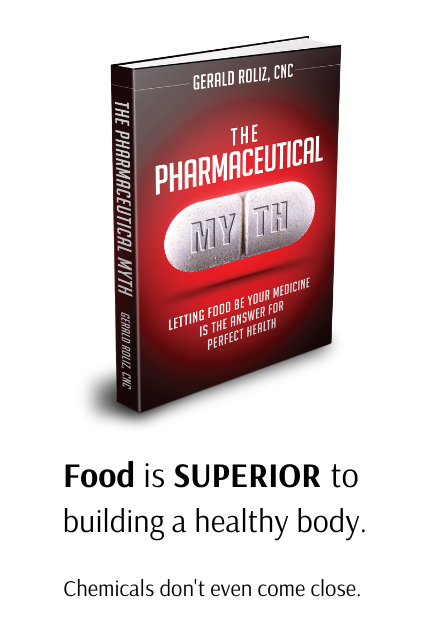Mind-body approaches envelop a unique perspective that our thoughts and emotions deeply intertwine with our physical health. This profound interaction stems from the belief that our mental status can influence our bodily well-being and vice versa. Often, people may not realize how interconnected these elements truly are–like a fine-tuned orchestra creating a harmonious symphony of overall wellness. By exploring these techniques, we delve into a vibrant tapestry of wellness strategies that celebrate the unity of mind and body. So let’s get started on this journey together.
Mind-body approaches such as meditation, yoga, and tai chi have shown efficacy in improving mental health symptoms and promoting overall well-being. These practices can help reduce stress, anxiety, and depression while enhancing relaxation and mindfulness.

What is the Mind-Body Connection?
The mind-body connection is a fundamental concept that underscores the intricate relationship between our mental and physical well-being. It revokes around the idea that our thoughts, emotions, and physical health are intricately linked, each influencing the other in profound ways—imagine your mind and body as partners in a dance, constantly responding to and influencing one another.
Take for instance, when you’re feeling anxious or stressed, you might notice physical symptoms such as a racing heart, sweaty palms, or tense muscles. On the flip side, a slouched posture or a heavy feeling in your chest can affect your mood negatively. These are clear manifestations of the intricate interplay between our emotional state and physical responses.
This isn’t just some abstract concept—there’s actual science backing this up. The mind-body connection has been proposed to be bi-directional, with mental states such as anxiety or depression affecting physical health and vice versa. For example, chronic stress can lead to increased risk of heart disease, while depression can weaken the immune system.
Consider how someone who experiences prolonged sadness might start to feel physically drained. Their muscles may ache, and they may have trouble sleeping or eating properly. In contrast, engaging in physical exercise can release endorphins, natural mood lifters, which positively impact mental well-being.
Think of your mind and body as two sides of the same coin—inseparable yet distinct, each influencing the other. Just as a stone thrown into a pond creates ripples that reach every edge, our thoughts and emotions reverberate throughout our body.
Understanding this intricate connection serves as the foundation for various mind-body approaches and therapies designed to promote holistic wellness and healing—a subject we’ll explore more deeply as we continue exploring these integrative techniques.
As we conclude our discussion on the mind-body connection and its implications for holistic wellness, let’s now transition into exploring practical physical techniques for promoting overall well-being.
Physical Techniques for Wellness
When it comes to nurturing your well-being, incorporating physical practices into your routine can be deeply impactful. These practices aren’t just about getting you moving; they are designed to support not only your physical health but also your mental and emotional well-being. Let’s take a closer look at some of these techniques and how they contribute to holistic wellness.
Yoga: Finding Balance and Clarity
Yoga hasn’t endured for thousands of years without reason. Its blend of physical postures, breathing exercises, and meditation offers a holistic approach to health. By engaging in yoga regularly, individuals can improve their flexibility, build strength, and achieve mental clarity. The practice encourages a mind-body connection that fosters a sense of tranquility and balance in daily life.
Tai Chi: Embracing Mindful Movement
Tai Chi, a Chinese martial art, emphasizes slow, deliberate movements coupled with deep breathing techniques. It’s not just about self-defense; Tai Chi promotes relaxation and balance. By engaging in these gentle, flowing movements, individuals can cultivate a sense of harmony within themselves, reducing stress and encouraging mindfulness in their daily lives.
Acupuncture: Ancient Healing Wisdom
Acupuncture is an ancient Chinese practice that involves the strategic insertion of thin needles into specific points on the body. This technique aims to alleviate pain and promote overall wellness by stimulating the body’s natural energies. Proponents of acupuncture often report improvements in various health conditions as well as experiencing deeper relaxation and heightened well-being after sessions.
Each of these physical techniques plays a crucial role in fostering overall well-being. While yoga supports flexibility, strength, and mental clarity, Tai Chi focuses on mindful movement to promote relaxation and balance. On the other hand, acupuncture taps into ancient healing wisdom by targeting specific points on the body to alleviate pain and enhance overall wellness.
These physical techniques are far more than just exercises or therapies; they represent time-honored practices that have stood the test of time in promoting holistic wellness. Integrating them into our modern lifestyles allows us to experience the powerful connection between our physical bodies and our overall well-being.
Now that we’ve explored the significant impact of physical techniques on holistic wellness, let’s shift our focus to delve into strategies for nurturing mental and emotional well-being.
Mental and Emotional Self-Care Techniques
Our minds and emotions are just as vital as our bodies. Sometimes, they need a little bit of care and attention too. We often forget about this crucial part of ourselves, yet it plays a significant role in our overall wellness. Let’s explore some simple techniques that can help nurture a healthier and more balanced state of mind.
Mindfulness Meditation
Meditation is like taking our minds for a walk. It’s a time to sit quietly, focus on our breathing, and be present in the moment. This practice has proven benefits—it helps to reduce stress and anxiety, improve emotional stability, and increase our attention span. Even just 10 minutes of mindfulness meditation a day can make a real difference.
“[Meditation is] …the ability to focus exclusively on what’s being done or said… It’s living moment by moment… anything that takes us out of autopilot.” – Andy Puddicombe
Conscious Deep Breathing Exercises
Another powerful technique is conscious deep breathing. We sometimes go through our days without really noticing how we breathe. But when we consciously take slow, deep breaths, it can have a magical calming effect on our minds. When we feel stressed or anxious, deep breathing exercises can help us feel more grounded and centered. It gives us the time and space to process our emotions in a healthier way.
Studies have shown that deep breathing exercises can have a positive impact on our well-being by reducing stress levels, slowing down heart rate, and even lowering blood pressure.
Let’s try it: Take a slow, deep breath in through your nose for 4 seconds, hold for 4 seconds, then exhale slowly through your mouth for 8 seconds. Repeat this for several rounds.
Journaling for Self-Reflection
And finally, there’s journaling—writing down our thoughts and feelings in a personal diary or notebook. Journaling is like having a conversation with ourselves; it offers a safe space to process what we’re going through and gain new insights.
For some, journaling is an emotional release—a way to unload their worries onto the paper and let them go. For others, it serves as a tool for self-reflection or problem-solving. By putting our thoughts into words, we often gain clarity about what’s important to us and what challenges we might be facing.
These mental and emotional self-care techniques may seem simple at first glance but their impact on our overall well-being is profound. They offer us the opportunity to cultivate inner peace, manage stress more effectively, and foster emotional resilience—all essential components of holistic wellness.
Amidst the myriad of holistic therapies available to us, these self-care techniques provide an essential foundation for exploring further avenues of comprehensive wellness.
Exploring Holistic Therapies
When it comes to taking care of ourselves, holistic therapies offer a unique approach to wellness. These approaches look beyond just the physical body and consider the mind, emotions, and spirit. Let’s explore a few popular holistic therapies that have been known to promote relaxation, healing, and overall well-being.
Aromatherapy: Sense of Serenity
Aromatherapy uses essential oils derived from plants to promote relaxation, alleviate stress, and uplift mood. These oils are often inhaled or applied topically after being diluted with a carrier oil. The scent molecules from the oils interact with the receptors in the brain, triggering responses that can help reduce anxiety, improve sleep, and even enhance cognitive function.
One common example is lavender oil; its gentle floral aroma is known for its calming effects which can help ease feelings of stress and promote relaxation. On the other hand, peppermint oil has an invigorating scent that stimulates the mind and can aid concentration. Aromatherapy offers numerous options, making it highly adaptable to individual needs and preferences.
Reiki: Channeling Energy for Healing
Reiki, a Japanese energy healing technique, involves the channeling of energy to promote emotional and physical healing. The practitioner places their hands lightly on or above the person receiving treatment, with the intention of facilitating the flow of energy to support the body’s natural ability to heal itself. People often experience feelings of peace and deep relaxation during Reiki sessions.
This practice is based on the idea that an unseen “life force energy” flows through us and is what causes us to be alive. If one’s life force energy is low, then we are more likely to get sick or feel stress, but if it is high, we are more capable of being happy and healthy.
Crystal Healing: Tapping into Earth’s Energy
Crystal healing is based on the belief that crystals can bring balance, clear blockages, and promote positive energy flow within the body. Different crystals are thought to possess various properties. For instance, amethyst is associated with promoting calmness and spirituality, while citrine is believed to enhance creativity and motivation.
The use of crystals in healing dates back centuries and draws from the idea that everything in nature has energy. Those who believe in crystal healing suggest that placing specific crystals at certain points on the body can align chakras (energy centers) or otherwise affect mental, emotional, or physical well-being.
Holistic therapies like these encourage an integrated approach to managing emotional well-being while offering additional ways to address stressors in life. By incorporating these practices into your self-care routines, you may discover a deeper sense of balance and well-being as you connect with your mind, emotions, and body in new ways.
As we continue our exploration into the realm of mind-body approaches to wellness, let’s now shift our focus towards how these integrative techniques impact our physical health.
The Impact of Mind-Body Approaches on Physical Health
Mind-body approaches are not only beneficial for your mental equilibrium; they also hold the power to transform your physical well-being. Let’s ponder a few significant ways in which these techniques can have a positive impact on your overall physical health.
Reduced Risk of Heart Disease
Mind-body practices have been linked to a reduced risk of heart disease. Research has shown that individuals regularly engaging in activities such as meditation, yoga, and tai chi exhibit lower levels of stress and inflammation, contributing factors to heart disease. Additionally, these practices often lead to better regulated blood pressure and improved heart rate variability, crucial elements in maintaining cardiovascular health.
Lower Blood Pressure
One of the notable physical benefits associated with mind-body approaches is the ability to lower blood pressure. Studies indicate that various relaxation techniques employed in mind-body practices can effectively reduce hypertension. For instance, mindfulness-based stress reduction (MBSR), a common component of mind-body interventions, can significantly lower blood pressure among individuals dealing with hypertension.
Alleviation of Chronic Pain
The alleviation of chronic pain is yet another area where mind-body techniques have exhibited remarkable outcomes. Patients suffering from chronic pain conditions have reported substantial relief through the application of mind-body interventions like meditation, yoga, and acupuncture. These practices not only offer relief from pain but also contribute to an enhanced sense of overall well-being.
Improved Immune Function
Studies have revealed that mind-body approaches play a vital role in enhancing immune function. For instance, mindfulness meditation has been associated with an increase in antibody response to vaccinations, indicating improved immunological responses. Furthermore, mind-body interventions such as yoga and meditation have been linked to reduced markers of inflammation and enhanced heart rate variability, both contributing to bolstering immune function.
In summary, the impact of mind-body approaches on physical health cannot be overstated. The evidence points to noticeable improvements in heart health, blood pressure regulation, pain management, and immune system function. These findings highlight the profound interconnectedness between mental and physical well-being and emphasize the significance of integrating mind-body approaches into our wellness routines.
With a clearer understanding of the pivotal role mind-body approaches play in improving physical health, let’s now delve into strategies for enhancing mental health through these transformative techniques.
Enhancing Mental Health Through Mind-Body Techniques
When it comes to improving mental health, mind-body techniques offer a holistic approach that considers the interconnectedness of our physical, emotional, and social well-being. These techniques have been shown to be powerful tools for managing and enhancing mental wellness, offering benefits such as reducing symptoms of anxiety and depression, improving sleep quality, and boosting overall mood and emotional resilience.
Let’s start with the reduction of symptoms related to anxiety and depression. Mind-body techniques, such as meditation, yoga, and deep breathing exercises, are effective in calming the mind and alleviating stress. By incorporating these practices into daily life, individuals can cultivate a sense of inner peace, create mental space to address intrusive thoughts, and develop coping mechanisms to navigate challenging emotions.
Additionally, these practices play a crucial role in improving sleep quality. The relaxation induced by mind-body techniques can help regulate sleep patterns and promote better rest. Sleep is closely tied to mental well-being, and by integrating mindfulness exercises or gentle movement practices into a bedtime routine, individuals may experience more restful and rejuvenating sleep.
Furthermore, mind-body techniques contribute to boosting overall mood and emotional resilience. Engaging in activities like tai chi or qigong can enhance physical balance while fostering a sense of harmony between the body and mind. These practices facilitate self-awareness, emotional regulation, and an increased capacity to cope with life’s challenges.
It’s important to note that the benefits of mind-body techniques extend beyond individual experiences; they also have ripple effects on relationships and communities. By cultivating a sense of inner calm and emotional resilience through these practices, individuals are better equipped to engage positively with others, contribute to a supportive social environment, and ultimately foster collective well-being.
In essence, the integration of mind-body techniques into daily life offers multifaceted benefits for mental health. From alleviating symptoms of anxiety and depression to enhancing sleep quality and promoting emotional resilience, these holistic practices provide valuable tools for nurturing overall well-being.
Discover how a holistic approach can revolutionize your mental well-being. Visit us at nhicidaho.com/bookappointment or call us at 208-906-8883 to start your journey towards a healthier mind and body.



